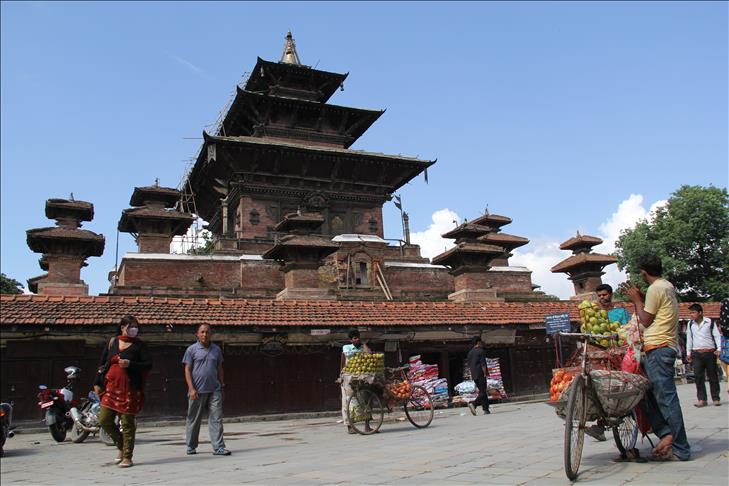
By Deepak Adhikari
KATHMANDU, Nepal
With their businesses left struggling by devastating earthquakes in April and May, Nepal’s tour operators have turned to social media in a bid to attract tourists.
Inspired by a campaign in Tunisia that urged tourists to visit the country after a terrorist attack on the Bardo Museum in March, Raj Gyawali, the founder director of Social Tours in Kathmandu, asked tourists in Nepal or those planning to visit the country to post photos on social media sites like Facebook and Instagram.
Soon Facebook, Twitter and Instagram began to be flooded with photos holding placards saying ‘"I am in Nepal now" or "I am going to Nepal" and hashtags such as #stillNepal, #stillsmiling.
“We started with a few tourists in [Kathmandu's tourist district] Thamel asking them to support our campaign. Until now, the photos have reached 500,000 people and more than 2,000 have shared it,” Gyawali told Anadolu Agency.
“As tour operators we felt the urgency. If we didn’t market our tourism products, if we didn’t request people to come, who will?” Gyawali said. In May, he and other tourism entrepreneurs set up a Facebook page called “Nepal Tourism Recovery: Strategy and Action” to help the sector's recovery.
Since then, the group has met in Kathmandu every Wednesday and proposed strategies to help the tourism sector bounce back from the catastrophe. The group’s activities include an online photobook of tourist sites after the disaster and a website assessing the earthquake’s damage on hotels in Kathmandu.
The group, which has now grown into a 2,000 member forum, hasn’t confined itself to social media. It has its own travel advisory website for prospective tourists, including telling them whether or not ATMs are working, lists of the safest hotels and whether an area is affected by looting.
“The international media highlighted only the devastation and never covered areas that were intact. But that’s their business and we can’t do anything about it. So our attempt has been to build confidence in Nepal and spread the word that we are ready to welcome our guests,” said Gyawali.
Tourism contributes 7 percent to the country’s gross domestic product and employs roughly 500,000 people both directly and indirectly. Last week, the U.S., U.K. and New Zealand lifted travel restrictions for their citizens, although the British Foreign Office continues to warn of "a general threat from terrorism” in Nepal.
Nepal’s government, with assistance from a British aid group, has commissioned a report from foreign experts to assess the trekking routes in the Annapurna and Everest regions.
“Apart from Langtang, Rolwaling and Manaslu, we do not see much of a problem in other trails such as the Everest Base Camp Trek,” Erwin Scheibert, a Swiss geologist, who assessed the routes in the affected areas, was quoted as saying in a press statement.
Nepal’s other tourist destinations undamaged by the quakes include Pokhara, a popular resort town in the shadow of Annapurna, the world’s tenth highest mountain, and Chitwan National Park, home to endangered Royal Bengal tiger and one-horned rhinoceros.
Anadolu Agency website contains only a portion of the news stories offered to subscribers in the AA News Broadcasting System (HAS), and in summarized form. Please contact us for subscription options.

